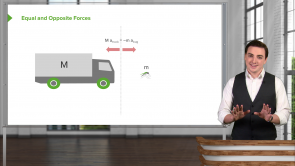Important Forces: Friction

About the Lecture
The lecture Important Forces: Friction by Jared Rovny, PhD is from the course Force.
Included Quiz Questions
In which direction does the frictional force act on a moving object?
- Friction always acts in the opposite direction to the motion.
- Friction always acts in the same direction as the normal force.
- Friction is a directionless force and only produces heat.
- Friction always acts in the direction of an object’s motion.
- Friction only acts directionally for static objects.
Which statement is TRUE about the static and kinetic friction between an object and a surface?
- The static frictional force is greater than the kinetic friction.
- The static frictional force is less than the kinetic friction.
- The static and kinetic frictional forces must always be equal.
- Static and kinetic frictional forces must be equal and opposite.
- Kinetic friction will always act simultaneously with static friction.
Why is the static friction force expressed as an inequality F_f ≤ μ_s.F_N?
- The static frictional force F_f will oppose forces acting on the object until a maximum threshold of μ_s.F_N.
- The static frictional force must be less than the kinetic friction.
- The static friction must be less than the coefficient of static friction.
- The static friction will oppose normal forces but will always be less than the normal force.
- The static friction will oppose the kinetic and normal forces unless they are too great.
What does the coefficient of friction tell us about the contact surface between two objects?
- It quantifies the roughness of the surface.
- It quantifies the strength of the normal force.
- It quantifies the coefficient of the normal force.
- It provides a ratio of kinetic and static forces.
- It is the force in Newtons that friction causes on an object.
These courses may be of interest to you
Customer reviews
5,0 of 5 stars
| 5 Stars |
|
5 |
| 4 Stars |
|
0 |
| 3 Stars |
|
0 |
| 2 Stars |
|
0 |
| 1 Star |
|
0 |







